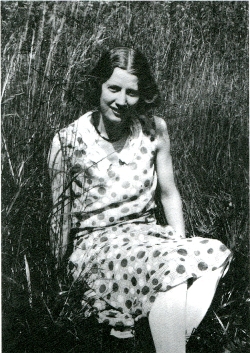Geologist and science writer Nina Morgan recalls a tale of love, tragedy and trilobites

In 1991 Reinhard Kaiser bought a mixed lot at a stamp auction in Frankfurt– and stumbled upon an extraordinary love story. Among the items was a packet of 30 letters written by the German geologist and palaeontologist Rudolf Kaufmann to a young Swedish woman, Ingeborg Magnusson.
Kaufmann, son of a physics professor at Königsberg University in Germany, was born in 1909. Fascinated by the boulders found in the Pleistocene drift of northern Germany as a child, he went on to study geology at universities in Königsberg, Munich and Griefswald. In 1933, aged just 24, he published a PhD dissertation on variation in the Upper Cambrian trilobite genus Olenus, and was offered a position at Greifswald University. All looked set for a satisfying academic career in geology – but then came the Nazis. Although he was a second generation Christian, Kaufmann's family was of Jewish decent. As a result, he was branded as 'non-Aryan', and dismissed from his position. Unable to find work in Germany as a scientist, he sought whatever employment he could get.
A time of trouble
 In the summer of 1935, while working as a photographer in Italy, Kaufmann met the 28-year-old Ingeborg (picture) when she was enjoying a holiday in Bologna. The pair fell deeply in love. But theirs turned out to be a tragic tale.
In the summer of 1935, while working as a photographer in Italy, Kaufmann met the 28-year-old Ingeborg (picture) when she was enjoying a holiday in Bologna. The pair fell deeply in love. But theirs turned out to be a tragic tale.
In 1936 Kaufmann was arrested and imprisoned for three years for 'offences against the race laws'. He carried on writing to Ingeborg while in prison, and managed to continue his work on trilobite evolution by corresponding with scientific contacts abroad. When war broke out in 1939 he escaped to Lithuania. There, after months of uncertainty and suspense, he was given a job in the Geological Survey in Kaunas – only to be murdered by Nazi soldiers while doing fieldwork on a country road, sometime after 1941.
The German-born geologist and palaeontologist Curt Teichert (1905-96), who married Kaufmann's sister Gertrud in 1928 and eventually settled in the United States, remembered his brother-in-law as a "cheerful companion, an indefatigable worker, and a sincere and mature scientist. He shared the fate of millions and his senseless death stands as a monument to human wickedness and ignorance alike". Although in all the couple were able to spend just 13 days in each other's company, Ingeborg, too, never forgot him. She remained unmarried and kept his letters. After her death in 1972 they were passed to her sister Greta, then stolen from a basement in Sweden before finally ending up in the Frankfurt auction house.
No ordinary tale
For palaeontologists Rudolf Kaufmann's story is no ordinary tale of enduring love and a life lost. Kaufmann's careful studies documenting the evolution of the primitive trilobite
Olenus, a common fossil in the Cambrian alum shales in Sweden, led to the idea of ‘punctuated equilibrium’, a theory made famous in 1972 by American palaeontologists and biologists, Niles Eldridge (b. 1943) and Stephen Jay Gould (1941-2002).
Acknowledgement
Sources for this vignette include: Paper Kisses: A True Love Story by Reinhard Kaiser, translated by Anthea Bell (ISBN 978-1590511817); The obituary of Rudolf Kaufmann by Curt Teichert, Am Jour Sci, vol 244, No 11, November 1946, pp. 808-809; Trilobites by John H Lienhard, available at: http://www.uh.edu/engines/epi2496.htm ; The blog Trilobites and Tragedy in the third Reich by Dan Chure of the Dinosaur National Monument available at: http://qvcproject.blogspot.co.uk/2012/11/trilobites-and-tragedy-in-third-reich.html; and the Wikipedia entry for Rudolf Kaufmann. Kaufmann's story also features in Trilobite! Eyewitness to Evolution by Richard Fortey; ISBN 978-0006551386.
- If the past is the key to your present interests, why not join the History of Geology Group (HOGG). For more information and to read the latest HOGG Newsletter, visit the HOGG website at: www.historyofgeologygroup.co.uk, where you'll also find abstracts for the talks and posters presented at the Conference on Geological Collectors and Collecting, April 2011 available free to download as a pdf file.
* Nina Morgan is a geologist and science writer based near Oxford and working on a book about the Geology of Gravestones.